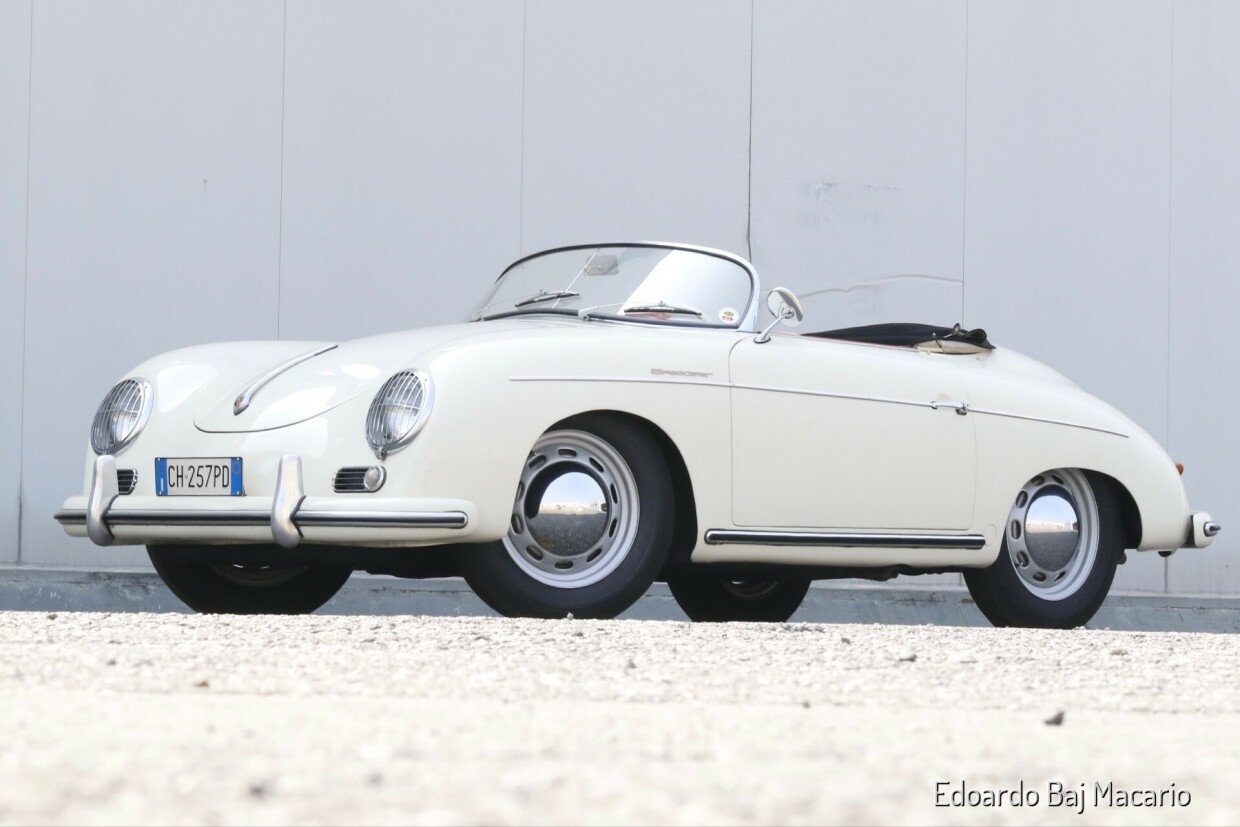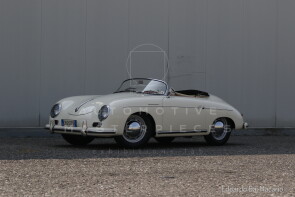
1955 Porsche 1500 Super Speedster
ON/OFF
Why am I an Automotive Masterpiece?
In the words of Ferry Porsche: “… I saw that if you had enough power in a small car it is nicer to drive than if you have a big car which is also overpowered. And it is more fun. On this basic idea we started the first Porsche prototype.” Max Hoffman perfected this basic idea, with a great commercial intuition that, however, could not foresee such a pure line. The 356 was created by Ferdinand "Ferry" Porsche, (son of the Ferdinand founder of the German company), who founded the Austrian company. Like the Volkswagen Beetle designed by Ferdinand Porsche Sr., the 356 was a four-cylinder, air-cooled, rear-engine, rear-wheel drive car with unitized pan and body construction. The chassis was a completely new design as was the 356's body which was designed by Porsche employee Erwin Komenda, while certain mechanical components including the engine case and some suspension components were based on and initially sourced from Volkswagen. The 356 was a luxury sports car and Porsche's first production automobile. Engineering innovations continued during the years of manufacture, contributing to its motorsports success and popularity. Production started in 1948 at Gmünd, Austria, where approximately 50 cars were built. On June 8, 1948, the first Porsche car obtained its approval: it was the Porsche 356/1 Roadster followed by the 356/2 until 1950. In 1950 the factory was moved to Zuffenhausen, Germany, and here we have the first 356 also called , retrospectively, "Pre-A". Initially only 1100 cc, then 1300cc and from 1952 also 1500 cc, they were easily recognizable from the windshield divided into two parts by a central rib. All were also available in convertible version (Cabriolet, Speedster and then Roadster).
In late 1954 Max Hoffman, the sole US importer of Porsches, convinced Porsche to build a stripped down roadster version with minimal equipment and a cut-down windscreen. It was a brilliant idea: with few frills (reduced weight) and above all a lowered price, it was the ideal 356 for young and sporty customers. The idea had perhaps not entirely predicted the truly winning aspect: a breathtaking line. The 356 1500 Speedster had these specific and unique features: the windshield is low and curved in one piece with rounded top corners. The side windows are plug-in on the doors. The hood is in non-upholstered fabric with a rear window in flexible material. There are chrome moldings by the door opening handles and the "Speedster" writing on the front fenders. Common to the 1500 of that year were the bumpers removed from the bodywork. The handle on the luggage compartment lid is elongated and with a Porsche frieze. The round and close lights and rear blinkers. The front blinkers are round and flat, integrated into the horn grille. The stop light is integrated into the rear light unit. The license plate illumination is in a chrome housing above the license plate. The engine is type 546/2, rear longitudinal mounted, 4 cylinders boxer, air cooled, it has a displacement of 1,488 cc and is powered by two Solex 32 PBI carburetors. The distribution is single-shaft with rods and rocker arms and overhead valves. The compression of 7:1 gives a power of 55hp at 4,400 rpm. The frame is platform, the suspensions are longitudinal oscillating arms and transverse torsion bars. Rear suspensions with oscillating axles and longitudinal arms. Worm and sector steering. Drum brakes. Rear, obviously, wheel drive. The clutch is dry single-disc and the gearbox (type 519) is 4 speeds mechanical. The weight of about 830 kg for a length of just under 4m. In 1956 the 356 was replaced by 356 A. The production of all the 356 continued until April 1965, well after the new model 911 had made its debut in the autumn of 1963. 76,313 units had been produced. Of these, 4.722 were Speedsters. 1900 were the so-called "Pre-A" models: 200 of pre-series in 1954 and 1700 in 1955.
This Porsche 356 1500 Speedster with bodywork by Reutter has chassis no. 80544 and engine no. P41254. This engine has the S (for Super) specifications: it’s of the 528/2 type, more powerful with 70 hp at 5000 rpm and is fitted with twin bigger 40 PCIB carburettors. Historically the Porsche 356 Speedster dates 1955, as birth year. Built to be supplied on the U.S.A market to the only importer Max Hoffmann who had commissioned it, especially meant for competitions and for young customers. The chassis car no. 80544 meets the US specifications; it has the speedometer in miles and bumper guards. It was born white with red interiors. Imported in Italy and registered, it has been completely restored. It participated to four Mille Miglia re-enactments, from 2004 to 2007.





